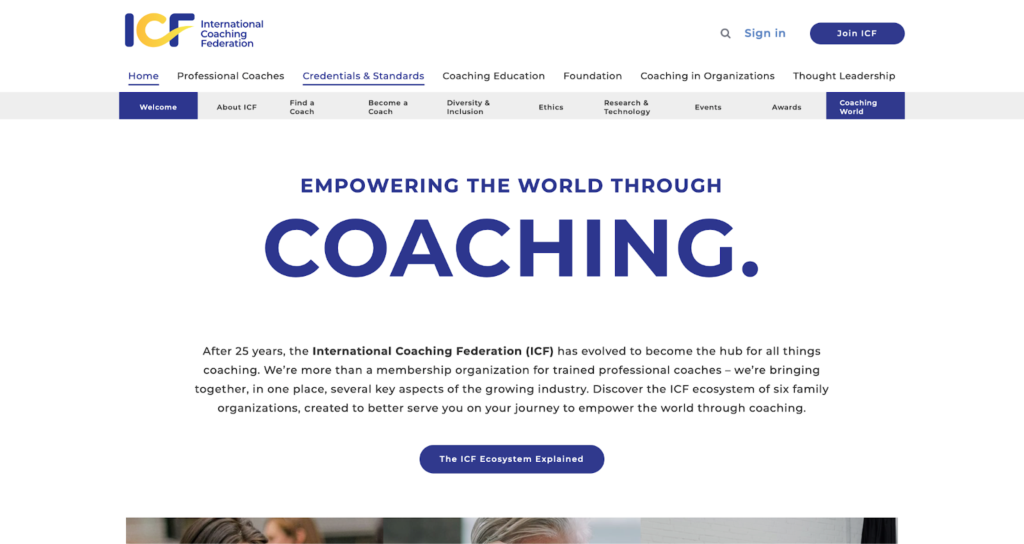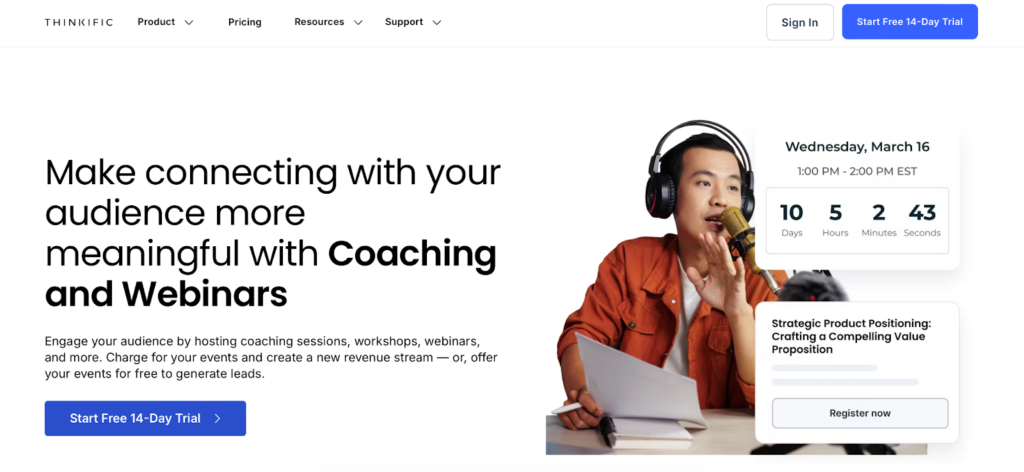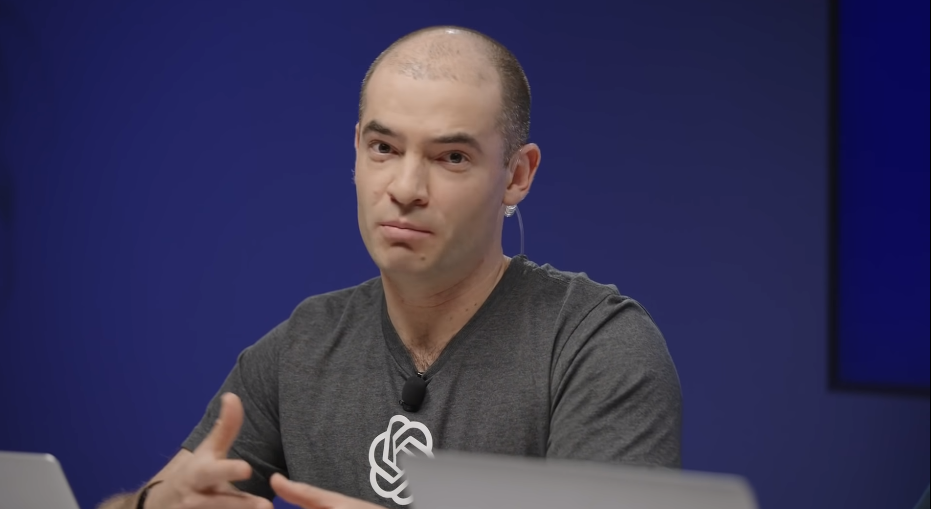Some people not only see potential in others but also know how to develop it into a productive and enjoyable life. People who do that for a living are called life coaches, and their work is just as essential to their client’s well-being as that of fitness coaches and nutrition coaches. If you’ve ever wondered how to become a life coach, you’re not alone.
As more and more people become interested in self-improvement, the demand for online life coaches is on the rise. In this guide, we take a close look at how to become a life coach online. We also cover everything you need to do to productively organize your work with clients anywhere in the world.
Skip ahead here:
What does an online life coach do?
A life coach is someone who helps you overcome challenges or accomplish goals in your personal or professional life.
To do this, they help you:
- Identify the challenges or goals you’re facing
- Define the steps you need to take to make your ideal outcome a reality
- Develop the habits, behaviors, or skills you need to reach your goals
And they do this all while providing emotional, mental, physical, and/or spiritual support.
If you haven’t worked with a life coach before, you might wonder how it’s possible for someone to help with, well, everything? The answer is twofold.
First, life coaching is an umbrella term. Life coaches can specialize in all kinds of things, from executive coaching for C–Suite corporate execs to fitness coaching for everyday people.
Second, more than anything, life coaching is a framework, a set of principles that can be applied to most problems.
“Life coaching removes the interference that stands between clients and the achievement of their potential.” – Curly Martin, The Life Coaching Handbook
Who can become an online life coach?
The next question people have when wondering how to become a life coach, is who can be a life coach?
Anyone can become a life coach. Unlike therapy or counseling, life coaching is an unregulated industry. This means you’re not required to meet criteria for education, training, or experience before taking on clients.
However, most clients will expect relevant experience and some degree of past success. Experienced life coaches will be able to point to a list of former coaching client success stories. New life coaches don’t have this, but will benefit from relevant experience in a related field.
For example, if you’re coaching people on running fitness, sharing your running story, full of successes and challenges, completed races, and more can help build the credibility you need to get started.
Do life coaches need to be certified?
No, life coaches do not need a certification to work as a coach. But, many coaches want to learn how to become a certified life coach.
So, many life coaches will seek out relevant certifications to demonstrate skills or knowledge and help establish trust with existing and potential clients.
The International Coaching Federation is the leading source of authority for life coaches. It has tons of resources for coaches, and more importantly, can help you find accredited virtual, hybrid, and in-person coaching courses in your Country, State, language, and niche.

How long does it take to become a life coach?
The time it takes to become a life coach is dependent on your unique journey.
With a sufficient amount of experience and an existing audience, you may be able to find coaching clients in as little as one day, or however long it takes to publish an Instagram reel. But for most people, the path to success is longer.
If you’re starting from scratch, then building a dedicated following can take months, even years. If you’re looking to earn a certificate, then you also need to factor in the time it takes to complete that course.
ICF’s level 1 coaching credential requires 60+ student contact hours in addition to the successful completion of your accredited course. That could mean months of course work.
Thankfully, you don’t need the certification to get started. So you can start right away and take on clients as you complete your coaching certificate on the side.
How much does it cost to become a life coach?
In general, ICF-accredited coaching courses can cost anywhere from $1,000 to $5,000, depending on where the institution is located.
That said, you should remember that learning is an investment into your coaching practice, and it will yield a ROI (return on investment) over time.
The better your credentials, the more you’ll be able to charge. You’ll also build a stronger position as an expert in your field, and you may end up getting invited to speaking opportunities and professional publications. This in turn can create additional revenue streams for your practice.
How to become a life coach online in 9 easy steps
Now that you have a general understanding of the different paths you can take to become an online life coach, let’s look at the actionable steps you need to take to make this goal a reality.
Step 1: Identify your niche and your audience
The most important part of coaching is your audience. Ask yourself, “who do I want to coach?”
“Coaches honor the client as the expert in his or her life and work, and believe every client is creative, resourceful and whole.” – Diane Menendez, Becoming a Professional Life Coach
Starting with the audience in mind will help you figure out your niche.
If you’d like to focus on recent graduates, then career coaching might be a good option. With the focus on CEOs, you might prefer to shift into mindset coaching that will help with productivity and stress management.
The opportunity for life coaches is near limitless. Here are some common life coaching niches, just to name a few:
- Self-Confidence Coaching
- Mindset Coaching
- Motivational Coaching
- Habit Formation Coaching
- Stress Management Coaching
- Career Transition Coaching
- Leadership Coaching
- Entrepreneurial Coaching
- Time Management Coaching
- Executive Coaching
- Wellness Coaching
- Nutrition Coaching
- Mental Health Coaching
- Relationship Coaching
- Divorce Recovery Coaching
- Family Coaching
- Parenting Coaching
- Financial Coaching
- Retirement Coaching
- Spiritual Coaching
- Creativity Coaching
- ADHD Coaching
- Grief Coaching
- Trauma Recovery Coaching
- Cultural Transition Coaching
The best niche for you is one that aligns most with your own life experiences and educational background. However, that doesn’t mean you can’t pursue a new field. The world is your oyster, so research and explore what interests you.
When you’re ready, you can then check out our list of 1,200+ coaching business names.
Step 2: Develop your skill set
Regardless of your experience, there’s always an opportunity to learn more and improve your existing skill set. You can do this by:
- Enrolling in accredited coaching programs
- Pursuing specialized certifications for your niche
- Pursuing related degrees
- Attending virtual webinars and workshops
- Attending in-person conferences, workshops, and seminars
- Reading books related to your niche
- Joining field-related networking groups and communities
- Hiring a mentor
- Working with peer coaches to exchange knowledge
- Engaging with other professionals on social media
- Listening to thought-leaders in your niche on podcasting platforms
If you’re interested in attending ICF-accredited coaching sessions:
- Find an institution that offers a course of your choice.
- Join ICF.
- Complete the course.
- Add the certificate to your credentials on your website and social media.
Once you’re ready to start your practice, you should think about how you’ll structure your online coaching sessions.
Step 3: Set up a framework for your work
Every successful coach has a unique methodology. However, you don’t have to reinvent the wheel and come up with new coaching techniques. A better option is to start by adopting already proven coaching programs and methods for leading effective coaching sessions.
How you deliver your coaching really matters. There are multiple instructional design models you can follow to make your content more engaging and memorable to your clients.
Additionally, you should structure your practice around your own goals. Are you trying to build a life coaching business or are you just sharing a one-off life coaching program? How many clients do you want to take on at one time? How much time every week do you want to devote to coaching?
These questions will help you shape a sustainable coaching practice and avoid burnout.
Step 4: Work out a pricing strategy
Part of learning how to become a life coach is learning how to create a pricing strategy. Because life coaching is such a broad industry, online life coaches charge vastly different prices for their work.
One common approach for pricing is to position yourself around an industry/niche average. You can find this average by doing a little research and asking around.
If you’re new and have little experience, you’ll want to price your services so they reflect that. A coach without certifications, a degree, or any client history can’t charge as much as an end-of-career professional with 30 years of experience and a hundred glowing client reviews.
Still, we recommend considering the value of your services in regard to the outcomes you help clients achieve.
You might be able to make a living charging $30 an hour for 1-hour, one-on-one coaching sessions. But if your services help clients to land six-figure C-suite positions, your services are far more valuable than a $30 or even $60 per hour rate.
To make your services more accessible to a wider audience without overwhelming your schedule, you should also create online courses. While online courses are not expensive, they only require the work to be done once and can then be leveraged multiple times, easily recouping the initial investment without any extra effort.
Step 5: Build your personal brand
Personal branding is everything to a life coach.
Life coaches should be inspirational and lead by example. So share your life, expert insight, and top tips directly with your target client on platforms like Instagram, TikTok, and YouTube. Offer your opinion in ongoing debates. Try to get in front of larger audiences — make appearances on TV, radio and podcasts, if possible.
You should also have a centralized online presence where you can direct your new audience, like a website.
Email marketing is another great brand-building tool. Collect email signups on your website and social platforms. Then write to your audience directly, with the goal of eventually converting them to paying clients of your online courses and coaching sessions.
Step 6: Build an online life coaching program
Depending on your life coaching specialty, you could either create a few separate coaching programs online—each with its own theme—or design a single online life coaching program as a membership.
Instead of coaching clients one-on-one, you can create a subscription-based program for many. You can also set up online communities for your course participants, creating a supportive community of like-minded individuals (and adding value to your services).
Creating programs and courses like these today takes much less effort than you would think, especially when you have the right tools at your disposal.
Thinkific is an easy-to-use platform for building and marketing online courses. It doesn’t require you to know any programming at all. You can use its intuitive drag-and-drop interface to design, build and sell your online courses from a single dashboard.

Additionally, you can create Thinkific communities for your clients and offer live events, webinars, and coaching calls. Thinkific’s new Coaching and Webinars feature allows you to offer live events for free, at a discounted rate, or at your full rate with ease.
Step 7: Market your online life coach business
Once your online offers are up and running, you need to help your audience find them.
In this sense, learning how to become a life coach requires some marketing skills. Some of the top marketing strategies you should consider are:
With a list like this, it’s easy to get overwhelmed. Don’t feel like you need to do everything in order to be successful.
Many professionals will choose to focus on one thing at first, eventually scaling to focus on two or three strategies. Once your business has grown, you can outsource some of your marketing to other professionals and refocus your energy elsewhere.
Of these strategies, we recommend building a central location for your business offerings. Oftentimes, this is a strong website that can host your coaching calls, webinars, courses, and resources. And then, you should focus on at least one strategy for connecting with your audience.
For many, this is social media. Social media is familiar, doesn’t have a large learning curve, and can grow rapidly. But if you already have a following, then it might make sense to lean into email marketing or content marketing next.
What’s most important is to be patient.
Step 8: Collect feedback from coaching clients
There’s nothing more important in coaching than getting constant feedback from your clients and adjusting your strategy accordingly. This is especially true if you’re still figuring out your specific life coaching niche.
Create regular polls on social media, send automated email surveys following a session, course, or webinar, or ask your clients for feedback directly. Make that data anonymous if you have to, but try to gather it as often as you can.
Step 9: Analyze and improve
Collecting feedback from your clients isn’t the end. You must then analyze the feedback and revise your services, content, or strategy in response.
Regularly schedule time (e.g. an hour a week) to update your old processes with any of the new feedback coming in. That way you can stay agile and even become more resilient as your practice matures.
Get started with online courses
Now that you know how to become an online life coach, there’s nothing stopping you from putting theory into action — and start making money online.
Create a Thinkific course today to see how easy it is to organize your expertise into an engaging and profitable learning experience.
Get started with Thinkific for free and build a foundation for a new source of income in as little as one day.
This blog was originally published in April 2022, it’s since been updated in February 2025 to include the newest information.











